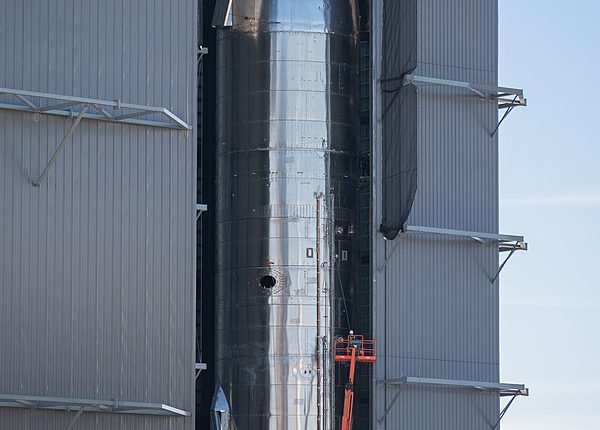Elon Musk has a ton of dreams when it comes to his beloved Starship line of rockets. But at the same time, troubles keep on brewing up every now and then, since space-related endeavors are ever so complicated. The latest addition to SpaceX’s list of problems is the Federal Aviation Administration (FAA) warning CEO Musk that the work on a launch tower for Starship has not yet been approved. The letter, which was addressed to Musk some two months ago, informed the space agency that the launch tower will also be a part of the environmental review that is currently going on at their facility on Boca Chica in Texas.
A spokesperson for the Administration said on Wednesday that they are currently in the process of reviewing the environmental impact of SpaceX’s proposed rocket assembly “integration tower”, while also being clear that the construction of the tower has been undertaken by the firm “at its own risk.”
The letter in question was forwarded to SpaceX back on May 6, and, as per Reuters, holds that the construction of one of the two proposed towers, which could apparently have a height of as much as 480 feet, has the potential to “complicate the ongoing environmental review process for the Starship/Super Heavy Launch Vehicle Program.”
If the tower fails to pass the environmental review, the privately-owned space firm could be forced to take it down. The letter further reads, “It is possible that changes would have to be made at the launch site, including to the integration towers to mitigate significant impacts,” while also claiming that the FAA was not informed of the construction beforehand, and instead, came to know of the same only through “publicly available video footage.”
This could in fact be a major blow to SpaceX’s plans of launching its Starship rockets through its own towers, a near necessity if it wants to truly expand its offerings in terms of space travel and other operations. While the agency has, for years, been carrying out short test flights, concrete results will most likely come only after the FAA approves the tower and issues the industry giant with a license for large scale testing.
For putting emphasis on the need for such a high tower, the prototypes of the Starship rockets are some 160 feet in height, which is about the size of a 16-storey building. The launch is initiated by a “Super Heavy” booster, which alone makes up the rocket’s bottom part, and has a height around 230 feet. Together, the rocket and booster are almost a mighty 400 feet tall.
While neither Musk nor his company have taken an official stance on the warning, the CEO has been pretty vocal in criticizing the Administration. The latest incident came on June 29, when Musk tweeted, “an aircraft entered the ‘keep out zone’, which is unreasonably gigantic. There is simply no way that humanity can become a spacefaring civilization without major regulatory reform,” hinting at the delay in the launch of his firm’s Teansporter-2 mission at Florida.
